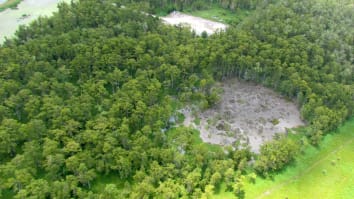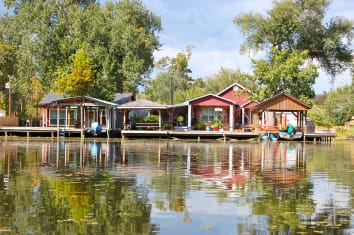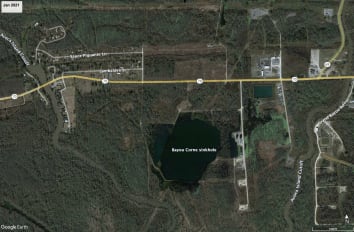 the Bayou Corne sinkhole taken shortly after it appeared on August 3, 2012." width="2429" height="1366" />
the Bayou Corne sinkhole taken shortly after it appeared on August 3, 2012." width="2429" height="1366" /> the Bayou Corne sinkhole taken shortly after it appeared on August 3, 2012." width="2429" height="1366" />
the Bayou Corne sinkhole taken shortly after it appeared on August 3, 2012." width="2429" height="1366" />

After the majority of residents had to evacuate, nearby businesses were also forced to close. Although some tried to return to their homes when the evacuation order was lifted, many homeowners had to leave permanently due to property damage, pollution, and the decimated local economy. In 2012, about 350 people lived in the Bayou Corne community. In 2021, that number was down to 38 mainly senior citizens.
Immediately after the sinkhole appeared in 2012, chemicals that can harm human health were found in the area but at concentrations not high enough to cause immediate issues. The hole continues to emit polluting gases and trigger small earthquakes.
By 2018, the sinkhole had grown to 34 acres in area and 750 feet deep—and it’s still expanding. Of the residents who did try to make Bayou Corne home again, many ultimately had to move elsewhere. “We were forced out of our lives,” long-time resident Carla Alleman told Newsweek.
 Sinkhole in January 2021." width="2163" height="1442" />
Sinkhole in January 2021." width="2163" height="1442" />
Candy Blanchard, another displaced resident, told the magazine, “We are not out of a house. We are out of a home.”
A few people who still live in the area are fighting for compensation from Texas Brine, since they’re unable to sell their homes in the blighted area.
Geologists believe that the sinkhole will naturally stop enlarging at some point, perhaps when it reaches about 50 acres in size, but they’re unsure how long that will take. For now, the giant hole in the quiet bayou will continue to grow, and displaced families will still look for justice.